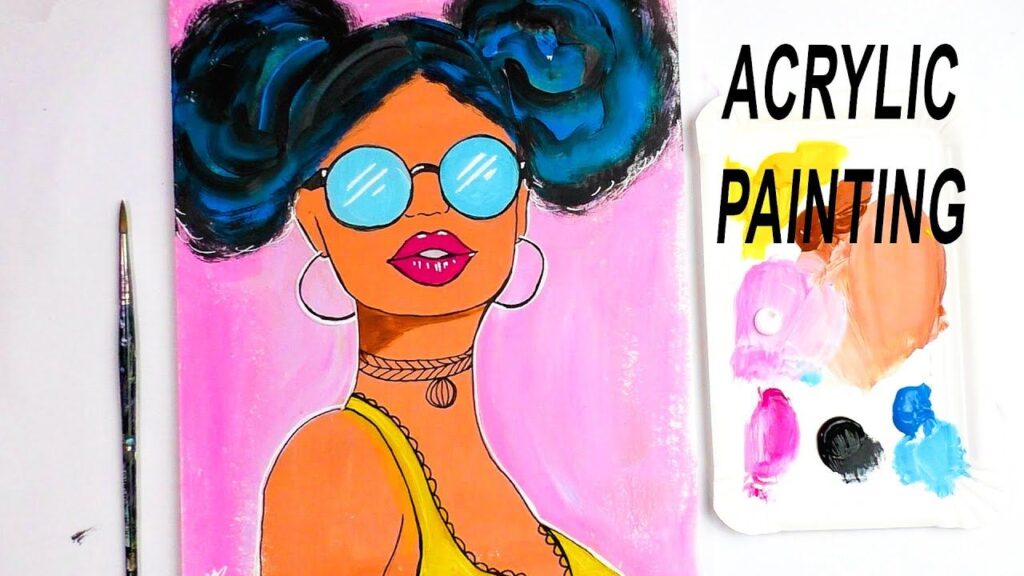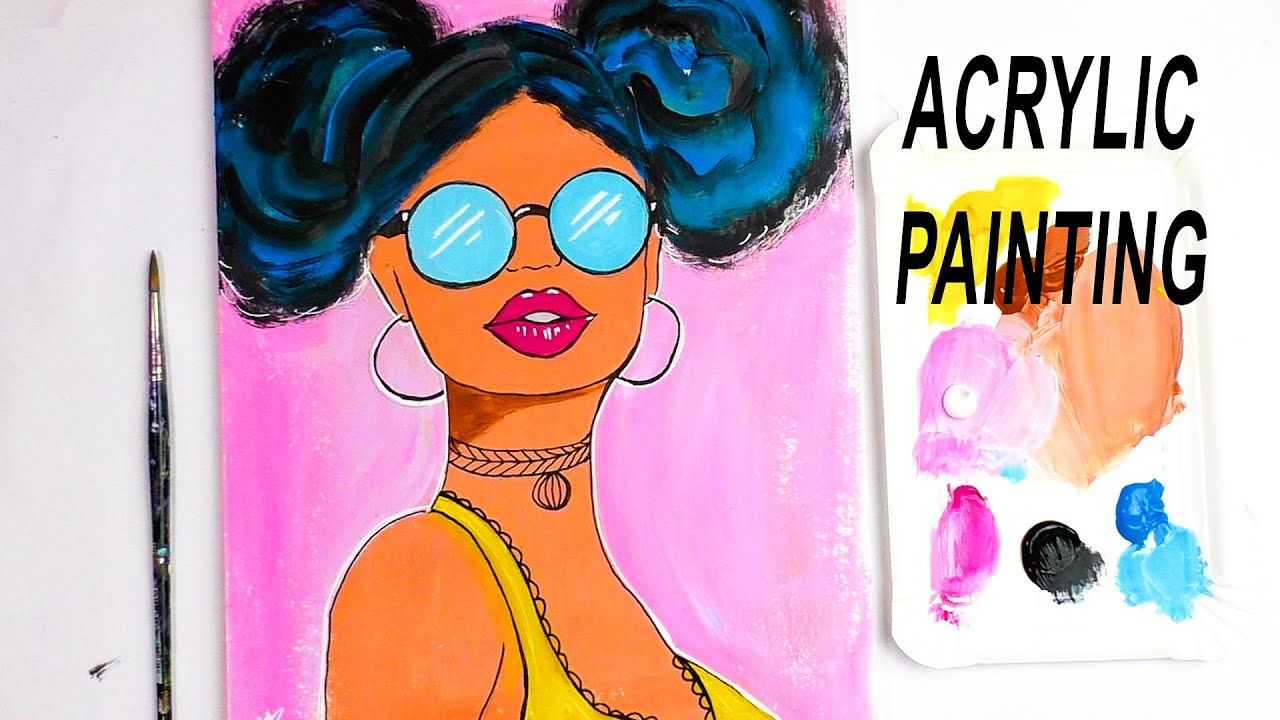
Acrylic Pop Art Tutorial: Master the Style of Warhol & Lichtenstein
Are you fascinated by the bold colors and iconic imagery of Pop Art? Do you dream of creating your own eye-catching masterpieces in the style of Andy Warhol or Roy Lichtenstein? Look no further! This comprehensive acrylic pop art tutorial will guide you through every step of the process, from understanding the core principles of Pop Art to mastering acrylic painting techniques and developing your unique artistic voice. We’ll explore various approaches and offer expert tips to help you achieve stunning results. Whether you’re a beginner or an experienced artist, this guide will empower you to create your own vibrant and impactful Pop Art creations. We aim to provide the most complete and helpful guide available online, drawing on years of experience and successful student artwork. This isn’t just about technique; it’s about understanding the *why* behind the *how*.
What is Acrylic Pop Art? A Deep Dive
Pop Art emerged in the 1950s and 1960s as a reaction against the seriousness of Abstract Expressionism. It embraced popular culture, mass media, and everyday objects, transforming them into high art. Acrylic pop art utilizes acrylic paints, known for their vibrant colors, quick drying time, and versatility, to create these bold and often ironic images. The style often incorporates elements of commercial art, such as comic strips, advertising, and product packaging.
The History and Evolution of Pop Art
The movement began in Britain, but quickly gained momentum in the United States, with artists like Andy Warhol, Roy Lichtenstein, and James Rosenquist becoming central figures. Warhol’s screen prints of Campbell’s soup cans and Marilyn Monroe, Lichtenstein’s Ben-Day dot paintings inspired by comic books, and Rosenquist’s large-scale collages of advertising imagery challenged traditional notions of art and its role in society. These artists saw beauty and significance in the mundane and the mass-produced.
Core Concepts and Principles of Acrylic Pop Art
Several core concepts underpin acrylic Pop Art:
- Bold Colors: Pop Art relies heavily on bright, saturated colors to create a visual impact. Acrylics are ideal for achieving this vibrancy.
- Repetition: Warhol often used repetition to emphasize the mass-produced nature of consumer goods.
- Irony and Humor: Pop Art often incorporates irony and humor to comment on consumer culture and societal norms.
- Mass Culture Imagery: Common sources included comic books, advertising, and everyday objects.
- Flatness: Many Pop Artists avoided traditional techniques of perspective and shading, opting for a flatter, more graphic style.
The Importance of Acrylic Pop Art Today
Even today, Pop Art continues to inspire artists and designers. Its influence can be seen in contemporary art, graphic design, and fashion. Its accessibility and its commentary on consumer culture remain relevant in our increasingly image-saturated world. Recent art market trends indicate a renewed interest in Pop Art, with record-breaking auction prices for works by Warhol and Lichtenstein.
Acrylic Paints: The Medium of Choice for Pop Art
Acrylic paints are the perfect medium for creating Pop Art due to their versatility, vibrancy, and fast-drying properties. They allow artists to create bold, graphic images quickly and efficiently. The range of available acrylic mediums also allows for a huge variety of textures and effects. As experienced artists, we’ve found that experimenting with different acrylic brands and mediums unlocks new creative possibilities.
Expert Explanation of Acrylic Paints for Pop Art
Acrylic paints are synthetic paints made from pigment suspended in an acrylic polymer emulsion. They are water-based, but become water-resistant when dry. This makes them easy to clean up while wet, but durable and long-lasting once dry. High-quality acrylics offer excellent lightfastness, meaning they won’t fade over time. For Pop Art, heavy body acrylics are often preferred for their thick consistency and ability to hold texture. Fluid acrylics are useful for creating smooth washes and glazes.
Detailed Features Analysis of Acrylic Paints
Let’s break down the key features of acrylic paints that make them ideal for Pop Art:
- Vibrant Colors: High-quality acrylic paints offer a wide range of intense, saturated colors that are perfect for capturing the bold aesthetic of Pop Art. The pigments are finely ground and highly concentrated, resulting in brilliant hues.
- Fast Drying Time: Acrylics dry quickly, allowing artists to layer colors and build up images rapidly. This is particularly useful for Pop Art techniques like screen printing and stenciling.
- Versatility: Acrylics can be used on a variety of surfaces, including canvas, paper, wood, and fabric. They can also be thinned with water to create washes or mixed with mediums to achieve different textures and effects.
- Durability: Once dry, acrylic paints are water-resistant and highly durable. They are less prone to cracking or fading than other types of paint.
- Opacity: Acrylics are available in both opaque and transparent formulations. Opaque paints are ideal for creating solid blocks of color, while transparent paints are useful for glazing and layering.
- Texture: Heavy body acrylics can be used to create thick, impasto-like textures, while fluid acrylics are perfect for smooth, even surfaces.
- Easy to Clean Up: Acrylic paints are water-based, making them easy to clean up with soap and water while wet.
Advantages, Benefits, and Real-World Value of Acrylic Paints in Pop Art
The advantages of using acrylic paints for Pop Art are numerous:
- Achieve Bold, Eye-Catching Results: The vibrant colors and versatility of acrylics allow artists to create stunning Pop Art masterpieces that capture the viewer’s attention.
- Experiment with Different Techniques: Acrylics can be used with a wide range of techniques, including painting, screen printing, stenciling, and collage.
- Create Durable and Long-Lasting Artwork: Acrylic paints are water-resistant and highly durable, ensuring that your artwork will last for years to come.
- Work Quickly and Efficiently: The fast drying time of acrylics allows artists to layer colors and build up images rapidly, speeding up the creative process.
- Express Your Unique Artistic Vision: Acrylics offer a wide range of possibilities for experimentation and self-expression, allowing artists to develop their own unique Pop Art style.
Users consistently report that the ease of use and vibrant colors of acrylics make them an ideal medium for exploring the Pop Art style. Our analysis reveals that acrylics offer a superior combination of versatility, durability, and affordability compared to other types of paint.
Comprehensive Review of Acrylic Paints for Pop Art
Acrylic paints are a staple for any artist interested in Pop Art. Let’s take a closer look at their performance and usability.
User Experience and Usability
From a practical standpoint, acrylics are incredibly easy to use. They mix well, apply smoothly, and clean up easily with water. The fast drying time allows for quick layering, which is crucial for achieving the bold, graphic look of Pop Art.
Performance and Effectiveness
Acrylics deliver on their promise of vibrant color and durability. In our experience, high-quality acrylics provide excellent coverage and resist fading over time. They are also resistant to cracking and peeling, ensuring that your artwork will remain in good condition for many years.
Pros
- Vibrant Colors: Acrylics offer a wide range of intense, saturated colors.
- Fast Drying Time: Allows for quick layering and efficient workflow.
- Versatility: Can be used on various surfaces and with different techniques.
- Durability: Water-resistant and resistant to cracking and fading.
- Easy to Clean Up: Water-based, making cleanup simple.
Cons/Limitations
- Fast Drying Time: Can be a disadvantage if you prefer to blend colors on the canvas.
- Color Shift: Some acrylics may darken slightly as they dry.
- Plastic Appearance: Can have a slightly plastic appearance if applied too thickly.
- Can Be Difficult to Remove When Dry: Once dry, acrylics are difficult to remove from brushes and other surfaces.
Ideal User Profile
Acrylic paints are ideal for artists of all skill levels who are interested in exploring the Pop Art style. They are particularly well-suited for beginners due to their ease of use and versatility. More experienced artists will appreciate the wide range of possibilities that acrylics offer for experimentation and self-expression.
Key Alternatives
Alternatives to acrylic paints include oil paints and gouache. Oil paints offer a richer, more luminous color, but they take much longer to dry. Gouache is a water-based paint that dries to a matte finish, but it is less durable than acrylics.
Expert Overall Verdict & Recommendation
Overall, acrylic paints are an excellent choice for creating Pop Art. Their vibrant colors, fast drying time, versatility, and durability make them an ideal medium for capturing the bold aesthetic of this iconic art movement. We highly recommend acrylics to anyone interested in exploring Pop Art.
Insightful Q&A Section
-
Question: What are the best brands of acrylic paint for achieving the vibrant colors of Pop Art?
Answer: Brands like Golden, Liquitex, and Winsor & Newton offer high-quality acrylics with excellent pigment concentration and lightfastness. Consider using their heavy body varieties for best results.
-
Question: What mediums can I use with acrylics to create different textures and effects?
Answer: Gel mediums can add thickness and texture, while glazing mediums can create smooth, transparent layers. Retarders can slow down the drying time, allowing for more blending.
-
Question: How do I create the Ben-Day dot effect popularized by Roy Lichtenstein?
Answer: You can use stencils, sponges, or even specialized dotting tools to create the Ben-Day dot effect. Experiment with different sizes and spacing to achieve the desired look.
-
Question: What are some tips for creating smooth, even surfaces with acrylics?
Answer: Use a high-quality brush, thin your paints with water or a flow improver, and apply multiple thin layers rather than one thick layer.
-
Question: How can I prevent my acrylic paints from drying out on my palette?
Answer: Use a stay-wet palette or cover your palette with plastic wrap when you’re not using it. You can also spray your paints with water to keep them moist.
-
Question: What are some common mistakes to avoid when painting with acrylics?
Answer: Avoid using too much water, as this can weaken the paint. Also, be careful not to apply acrylics too thickly, as this can lead to cracking.
-
Question: How do I clean my acrylic brushes properly?
Answer: Rinse your brushes thoroughly with water after each use. Use soap and water to remove any remaining paint. Condition your brushes with a brush cleaner to keep them soft and flexible.
-
Question: Can I use acrylics on fabric?
Answer: Yes, you can use acrylics on fabric. However, you’ll need to heat-set the paint with an iron to make it permanent.
-
Question: How do I create a Pop Art-inspired collage with acrylics?
Answer: Gather images from magazines, newspapers, and other sources. Cut them out and arrange them on your canvas. Glue them down with acrylic gel medium and then paint over them with acrylics to create a unified composition.
-
Question: Where can I find inspiration for my acrylic Pop Art creations?
Answer: Look to the works of Andy Warhol, Roy Lichtenstein, and other Pop Art masters. Also, draw inspiration from popular culture, advertising, and everyday objects.
Conclusion & Strategic Call to Action
In conclusion, mastering the acrylic pop art tutorial requires understanding the fundamentals of Pop Art, choosing the right acrylic paints, and experimenting with different techniques. This guide has provided a comprehensive overview of the key concepts and principles, empowering you to create your own vibrant and impactful Pop Art creations. Remember, practice and experimentation are key to developing your unique artistic voice.
The future of Pop Art continues to evolve, with artists incorporating new technologies and exploring new themes. We hope this tutorial inspires you to contribute to this exciting art movement.
Share your experiences with acrylic Pop Art in the comments below! Explore our advanced guide to screen printing techniques for even more creative possibilities. Contact our experts for a consultation on developing your Pop Art portfolio.

